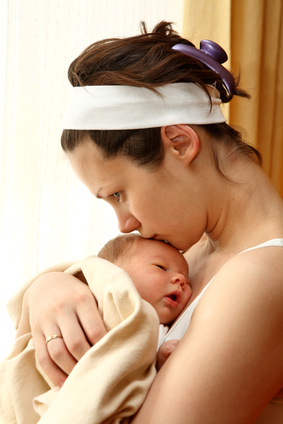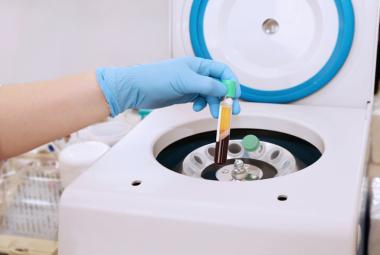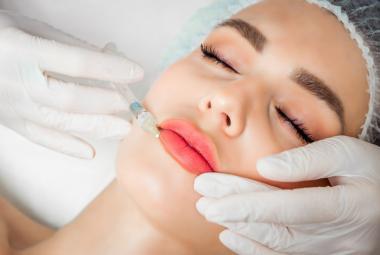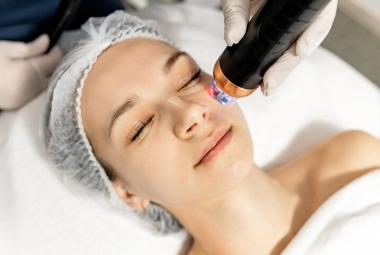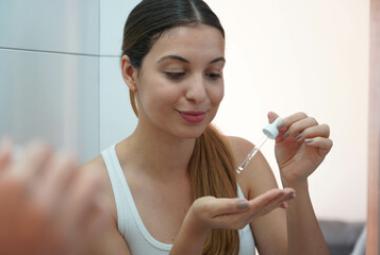Sarah has had depression on and off throughout most of her adult life. She finally found an antidepressant that worked for her. But now she’s pregnant and she’s been hearing all the awful things about antidepressants during pregnancy. She’s talked with her doctor about it, and he has assured her that the risk of problems is very small. But he is willing to consider other approaches. He is simply worried that she will get depressed again if she stops taking her medications, and her depression would also be bad for the baby.
Michelle has never had a problem with depression. But she is 4 months postpartum and her mother died unexpectedly. Her mother’s death has had a devastating effect and she is finding herself having problems completing even the simplest of tasks. She is overwhelmed with sorrow and grief, and her midwife is recommending an antidepressant to help her through this time. She too is worried about how antidepressants will affect her baby.
Depression during pregnancy and postpartum is fairly common, affecting anywhere from 15% to 25% of women. Antidepressants [link antidepressants] are an important part of the treatment arsenal for depression. But clinicians, and women themselves, are increasingly concerned about their use in pregnancy and while breastfeeding. Specifically, do antidepressants taken during pregnancy cause birth defects? Some studies have found that found a small, but statistically significant, increase in problems, such as heart defects. Other studies have found no harmful effects of antidepressants. Similarly, are there hazards for infants if their mothers take antidepressants while breastfeeding? Health care providers often make treatment decisions by balancing the risks and benefits of a medication. Is the risk of using the medication less than the risk of the mother getting depressed again? In most cases, the risk of using the medication is less than the risk of possible depression, so clinicians will prescribe it. But are antidepressants the only choice?
Curiously, while people debate about antidepressant use in both research studies and the popular media, non-drug treatments for depression are largely absent from the discussion. Fortunately, antidepressants are not the only choice for treating depression and may offer a safe “third choice” for treating depression during pregnancy and breastfeeding. Physicians and other health care providers may not consider these non-drug treatments, assuming that they cannot address more severe depression. But recent research paints a very different picture. There are a number of non-drug treatments that are effective for even major depression. Non-drug treatments include Omega-3s, exercise, bright light therapy [link bright lights], psychotherapy, and St. John’s wort. Many of these can be combined with each other, and are sometimes used in addition to antidepressants (only St. John’s wort cannot be combined with medications). I describe these treatment options below.
Omega-3 Fatty Acids
The long-chain Omega-3 fatty acids, EPA and DHA, have been used successfully to both prevent and treat depression. Both of these are found in fatty fish. EPA is the Omega-3 that actually treats depression because it specifically addresses the physiologic consequences of depression and lowers the stress response. It has been used by itself or has been combined with medications. When it is used with medications, it makes medications work more effectively. The American Psychiatric Association recently recognized EPA as a promising treatment for mood disorders.
DHA helps prevent depression, but studies so far have found that it does not treat it by itself. It is usually combined with EPA. There is a vegetarian source of DHA, but no vegetarian source of EPA; fish oil is still the best source. (Vegetarian DHA is the same product that is added to infant formula. Some mothers object to it because of that connection, but it is a safe supplement for mothers to take.) Sources and dosages are listed on the side bar. Even in relatively large doses, EPA and DHA are safe for pregnant and breastfeeding women, and provide a number of other health benefits for women, including lower their risk of heart disease and making them less vulnerable to stress.
ALA, the Omega-3 in flax seed and other plant sources, such as walnuts and canola oil, does not prevent or treat depression. ALA is not harmful and can be helpful in other ways. But it is metabolically too far removed from EPA to aid in lessening depression.
Exercise
The most important studies on exercise as a treatment for depression were two randomized trials from Duke University Medical Center that directly compared exercise to Zoloft. In both studies, exercise was as effective Zoloft in treating major depression. The strongest effects are for aerobic exercise, but weight lifting and stretching/yoga are also helpful. If you exercise at a moderate level, exercise is safe during pregnancy or breastfeeding. The guidelines for treating mild-to-moderate and major depression with exercise are listed on the sidebar.
The recommended exercise regimen for treating major depression requires more effort than the regimen for mild-to-moderate depression. But it is a viable alternative to medications and many women find that it is worth the effort. In the second Duke study, the researchers found that the group that came to the lab to exercise had a lower rate of depression than the group that followed a home exercise program. The fact that they needed to come to the laboratory probably meant that they received social support from study staff and fellow participants in addition to benefits of exercise. They were also probably more likely to exercise regularly when they knew that they were expected to be someplace to do it. You might find that exercise in a group setting works well for you too.
Psychotherapy
Don’t let anyone tell you that “talking therapy” is not effective for serious depression. That simply is not true. Two types of psychotherapy are effective for perinatal depression, even if severe: cognitive-behavioral therapy and interpersonal psychotherapy. Both have proven as effective as medications in treating major depression.
Cognitive therapy’s premise is that depression is due to distortions in people’s beliefs about themselves and the world. By addressing these beliefs, depression diminishes. This type of therapy is also effective in treating anxiety, obsessive-compulsive disorder and even chronic pain. If you are interested in learning more, I’d recommend the book, Feeling Good: The New Mood Therapy by David Burns. It is a do-it-yourself guide to cognitive therapy. The organizations listed at the end of this article can also provide further information.
Interpersonal psychotherapy (IPT), the newer modality, is quickly becoming the psychotherapy of choice for pregnant and postpartum women. IPT specifically addresses women’s key relationships, the support they receive from those relationships and how the relationships have changed since having a baby. It teaches mothers to identify sources of support and increase the amount of support they receive from existing relationships. It’s been used with many high-risk mothers to both prevent and treat depression during pregnancy and postpartum.
St. John’s wort
The herbal antidepressant St. John’s wort is the most widely prescribed antidepressant in the world, and it is highly effective in treating depression. Its standard uses are for mild-to-moderate depression, but it has been used for major depression as well. When researchers have compared St. John’s wort to Zoloft and Paxil, St. John’s wort was as effective as medications and patients reported fewer side effects. It is safe for breastfeeding, but some have expressed caution about its use during pregnancy.
Used by itself, St. John’s wort has an excellent safety record. But there are two important cautions. First, it can interact with other medications, so should not be combined with antidepressants, birth control pills, cyclosporins, and several other classes of medications. If you decide to take St. John’s wort, be sure to tell your doctor, midwife or other health care provider. Second, brands of herbal products vary widely in quality, and it’s not always possible to tell which product is good quality. Seek the advice of a naturopath or licensed herbalist to find a good product, or visit ConsumerLabs.com for information on specific brands.
In summary, there is a wide array of evidence-based treatments for depression that can be safely used during pregnancy and breastfeeding. Antidepressants can also be used. The only unwise choice is not treating depression because it can have serious consequences for both you and your baby.
Does the Benefit Outweigh the Risk?
Before prescribing antidepressants to pregnant or breastfeeding women, clinicians consider the risks and benefits. Does the benefit of using a medication outweigh the risk? With antidepressants, it’s not an idle question. For example, in one recent study, 20% of women who took antidepressants throughout their pregnancies had preterm babies. But 20% of the pregnant women with untreated depression also had preterm babies. Four to nine percent of the women who were either not depressed, or who had taken antidepressants only some of the time, had preterm babies. The researchers noted that there are substantial risks associated with NOT treating depression, and these need to be considered in any risk-benefit equation.[link depression topics]
For More Information about Non-Drug Treatments for Depression…
Omega-3 Fatty Acids (EPA & DHA)
Fish oil is still the best source of EPA and DHA (although a vegetarian DHA is available.) The U.S. Pharmacoepia specifically tests fish-oil products for contaminants. Visit USP.org for information about specific brands. Recommended dosages are as follows:
• 200-400 mg is the current recommended dosage of DHA for prevention of depression, but dosages of up to 800-1000 mg may soon be recommended
• 1,000 mg EPA for treatment of depression (can be combined with medication and/or DHA)
• U.S. Food and Drug Administration GRAS (generally recognized as safe) Levels:
- 1,500 mg DHA
- 3,000 mg DHA/EPA
Rosenthal, N.E. (2006). Winter blues: Everything you need to know to beat seasonal affective disorder, Revised Ed. New York: Guilford.
Sources for Light Boxes These are two companies I’ve found to be reputable.
Exercise
For mild-to-moderate depression
• Frequency: 2 to 3 times a week
• Intensity: moderate
• Duration: 20 to 30 minutes
For major depression
• Frequency: 3 to 5 times a week
• Intensity: 60% to 85% maximum capacity
• Duration: 45 to 60 minutes
Psychotherapy
Burns, D. (1992). Feeling good: The new mood therapy. New York: Avon.
The National Association of Cognitive-Behavioral Therapists
Association of Behavioral and Cognitive Therapies (ABCT)
International Society for Interpersonal Psychotherapy
For More Information on the Treatment of Postpartum Depression
Kendall-Tackett, K.A. (2010). Depression in new mothers, 2nd Edition. London: Routledge.
Kendall-Tackett, K.A. (2008). Non-pharmacologic treatments for depression in new mothers. Amarillo, TX: Hale Publishing.
Kathleen Kendall-Tackett, Ph.D., IBCLC is a health psychologist, board-certified lactation consultant, and La Leche League Leader. She is clinical associate professor of pediatrics at Texas Tech University School of Medicine in Amarillo, Texas.

